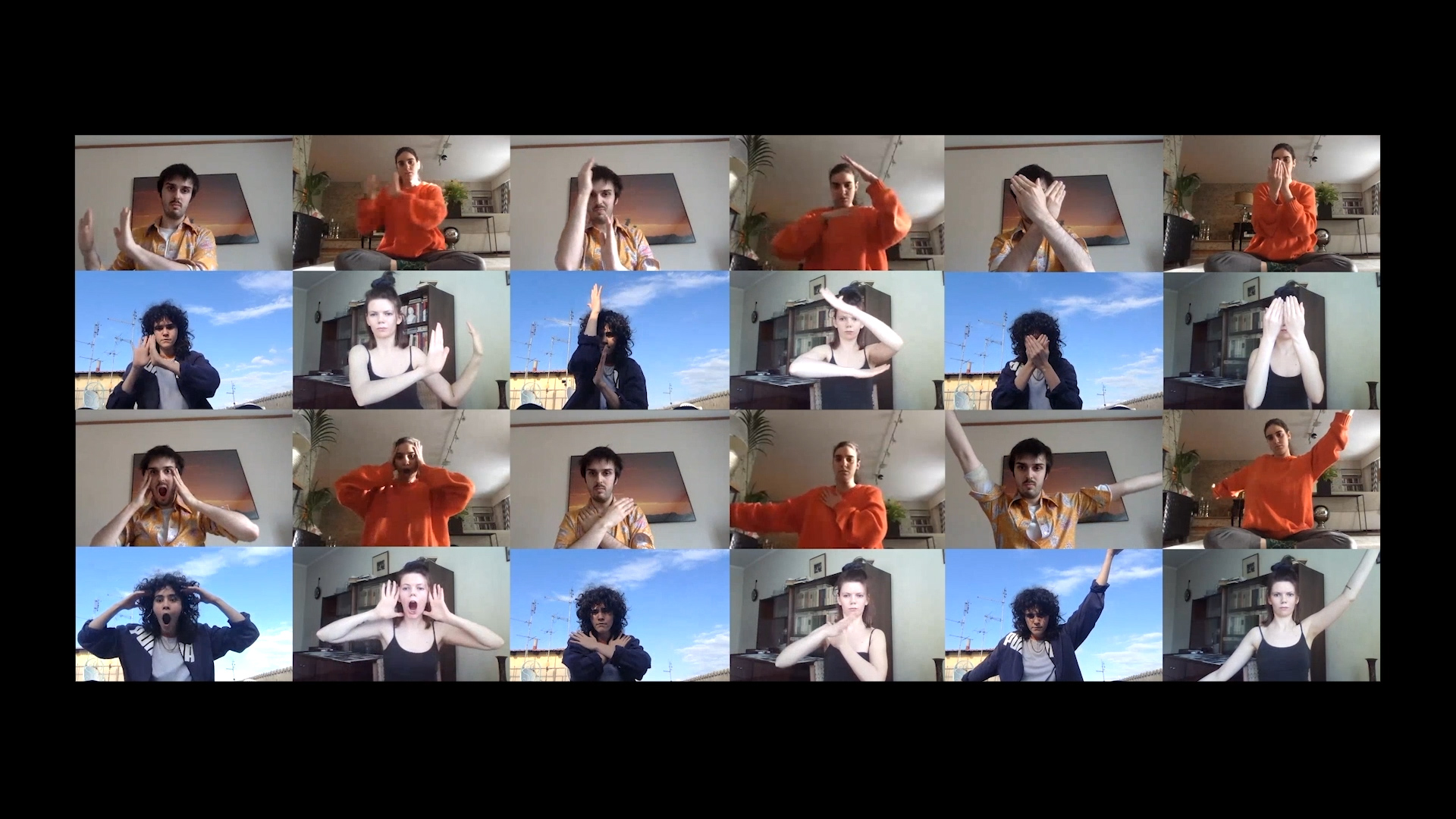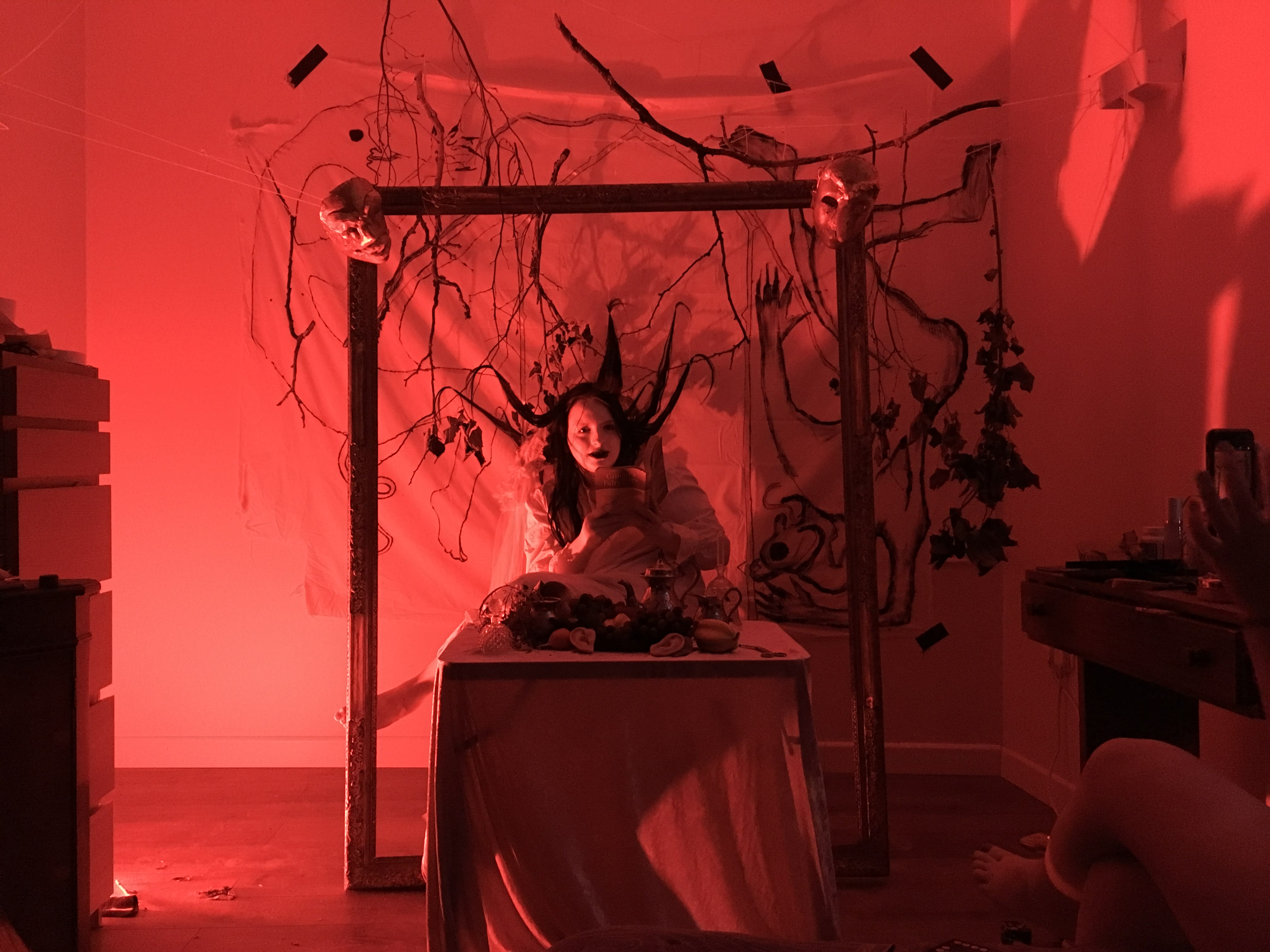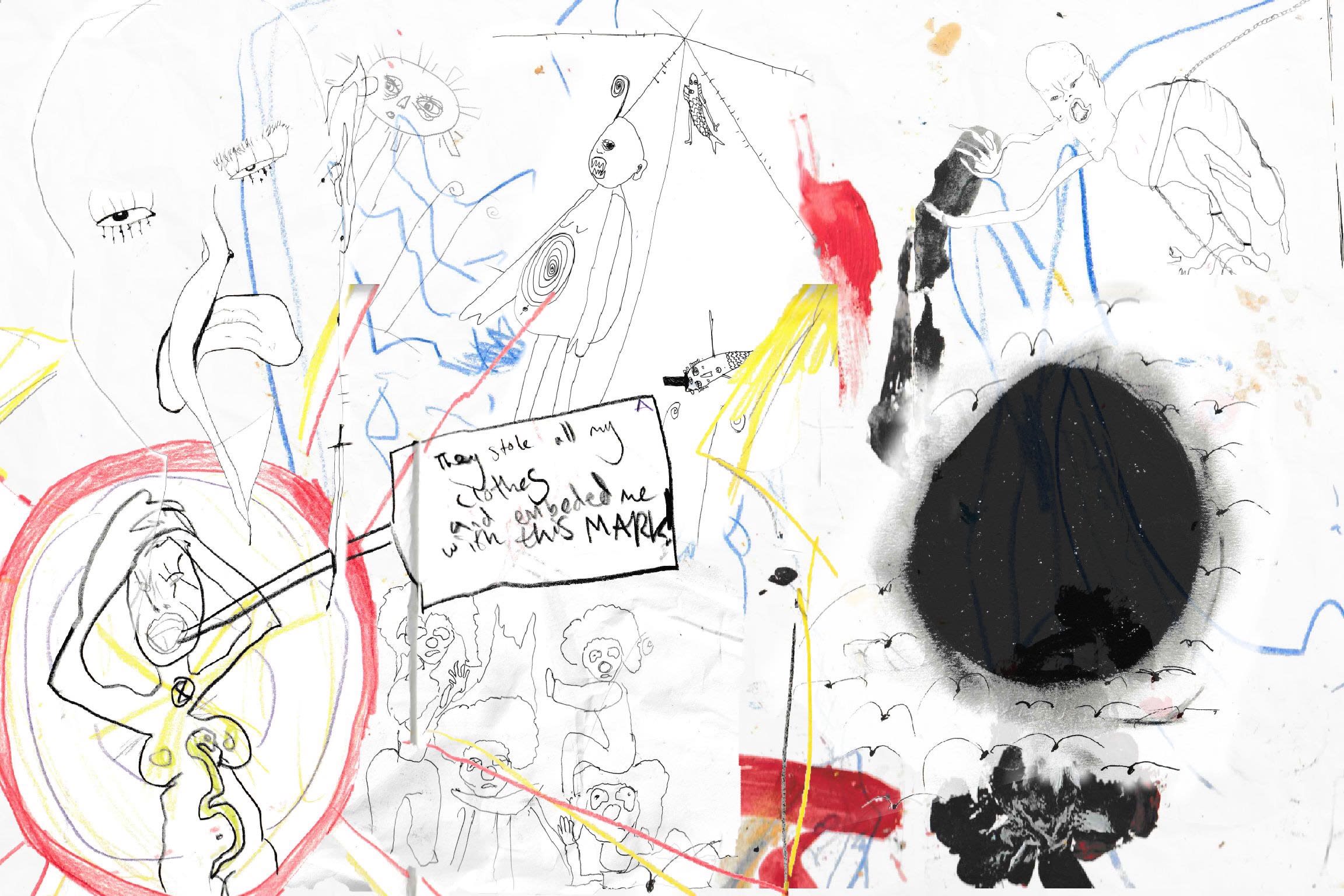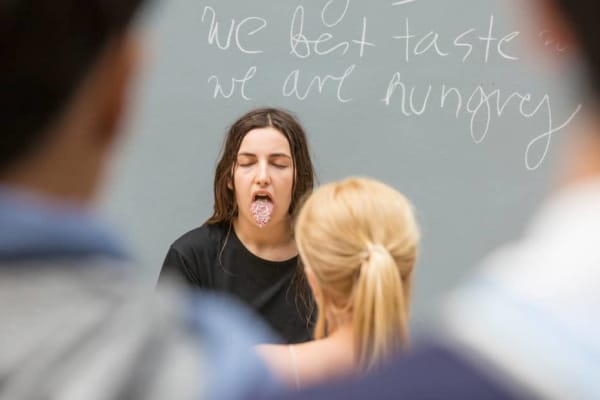Collaboration is founded on moments of exchange – it is necessarily social. This year, work which relies on interaction between participants has been challenged like never before. From collaborating across countries to re-creating the studio community, we look at the 2020 graduates who have worked collectively during crisis.
Working and living during a pandemic has changed our interactions and ways of working with others. We have been forced into a world of simultaneous solitude and close proximity; our engagements have been predominantly virtual. Across the College’s disciplines, our students often turn to collaborative forms of working. For some courses and programmes, such as performance, it is a key part of our students' practice. This year, they have not only had to work within their own limitations, but often those of their collaborators too. They have had to address practical challenges as well as ideological ones. How do you work together when you’re physically apart? What sort of socially engaged practice can you produce when sociability has changed? How can you perform without an audience?
Born out of the pandemic, No Name collective is made up of four BA Performance: Design and Practice 2020 graduates: Jonathan Anstett, Iphigenia Gkarani, Kaiva Kumerova and Anita Ricci. The group originally came together to create a live performance at the College, but their collective practice took a new turn during, and due to, lockdown. Working from four different countries, it was necessary for them to collaborate from a distance. This was not only a limitation on their work, but also became the subject of it. They asked themselves: how do you work with a physical practice while not being able to inhabit the same space? How do you create “live” art when the live can’t exist? The result is a short film Why Am I Here which explores “the ideological question of the virtual”.
Before the pandemic, the group were working towards a performance which was focused of fragmentation: “We wanted to subvert the space and produce a performance where lots of things happened. We were working with lots of sources, creating multiple scenes and things happening in different spaces, with ideas drawn from marketplaces and opera” explains Ricci. Describing their transition into working remotely, Kumerova adds, “We were working on one performance and then everything changed. We asked ourselves: what would happen if we take the work we’ve done so far, keep everything we can, drop everything else and start spiralling off from that framework – working within all our new limitations, like being in different countries, not being able to leave, limited resources and limited technology.”
Why Am I Here?
No Name
The film itself acts as both a complete work and the process of creating it. It draws together recordings of readings, workshops and conversations with footage of performed actions and their various locations. Like their original idea, it is a made up of fragments – a composite of processes and moments undertaken by four practitioners in four separate countries. While working on the film, the group did not have a fixed idea of output: “It was a genuine process of workshopping, which we then decided to include in the film alongside our previous material. It wasn’t that we were accumulating or producing a final result, we were just going with it, not really knowing what the final result would look like.”
When asked to describe the work, Ricci says “I’m still not sure…it’s a short film, it’s a performance piece, a time capsule, it’s a lot of different things. It documents but it’s not really a documentary. It’s documental. It shows a specific time, but it’s not a documentary.”
Fellow BA Performance: Design and Practice graduates Rosie Gearty and Anne Fleur Bloemsma have been collaborating since they first joined Central Saint Martins. Working under the collective name Creature Feature, their practice is wide-ranging and evades disciplinary definition. Together, they explore the mundane through the surrealist eye: “What we mean by that is, within philosophy and ethics, we look at our own morality and of those around us…we want to make art that can be funny to everyone and not just the elite in the art world.”
Although their work is ever-changing, often involving friends and additional collaborators, the consistent elements stem from their own shared interests and aesthetics, allowing them to tie together disparate ideas: “We are interested in old school horror films, the creature grotesque, the bright and colourful. We use mundane situations and crazy props to amplify the things we already see, but shown through our own dreamscapes. It’s our own property, our own clothing, it’s ourselves…how we dress every day. We curate it into costume or character design, using it to navigate social, ethical and philosophical issues” explains Gearty. She adds: “The only difference between what you see when we’re performing and when we’re not is just a camera really.”
-
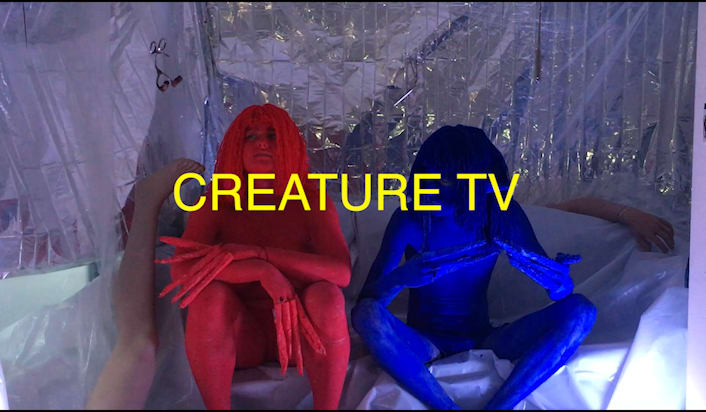
Creature Feature, BA Performance: Design and Practice
-
Creature Feature, BA Performance Design and Practice
-
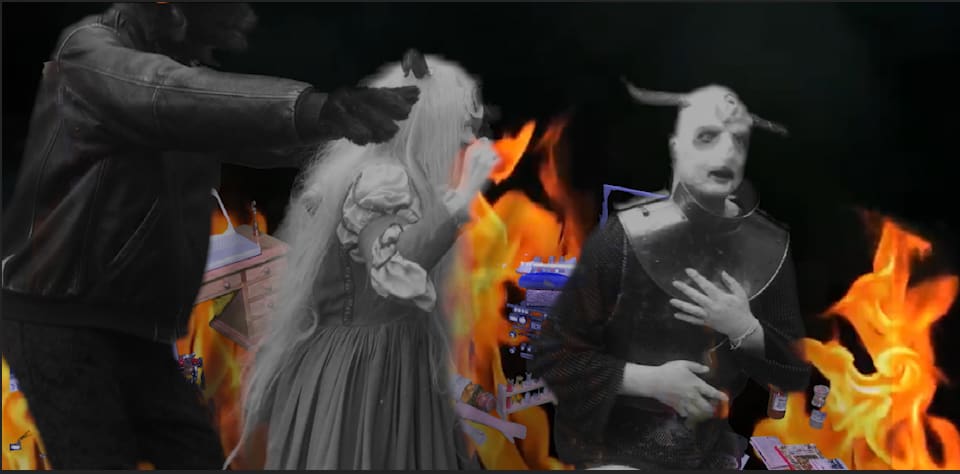
Creature Feature, BA Performance: Design and Practice
-
Creature Feature, BA Performance: Design and Practice
For the Graduate Showcase, Creature Feature invited us into their world with an online event – a mixture of screenings, live performance and discussion. Notably, the boundless nature of their practice has not been hindered by the pandemic. All of their work is improvised; it moves as quickly as they create ideas:
“We need to do it there and then before the idea goes,” explains Bloemsma. “Our curiosity, our childlike minds keep it all interesting and moving forward. We are drawn to defining the ephemeral – what we thought was intangible, things about the world that seem impossible to articulate. Because we’re both dyslexic we find it really difficult to explain our ideas in words so we just need to do it. We grab a camera, dress up and do it. It’s an explosive behaviour. We have ADHD so we just need to do it.”
Creature Feature is dependent on the exchange of collaboration – between Gearty and Bloemsma, but also with a network of others. Mirroring their experimental, all-encompassing approach to producing work, they aim to extend Creature Feature outwards; as a collective perhaps it also evades definition: “Is Creature Feature just us two? Or is it everyone who has worked with us in the past? If you have worked with us, you are part of us. We are part of something together.” Working during lockdown has helped the pair realise they can collaborate with people in different countries, allowing them to open up their networks even further. “We’re hoping to work with some of our classmates, some amazing dancers, set workers, singers, music-makers, really exciting people and painters, all different disciplines. We want to combine it all together…something beautiful together. We want to create our own community in Creature Feature’s image.”
-

Sara Coppa and Paolo Di Gennaro, MA Narrative Environments
Rooting Failure, The Crypt Gallery, London, 2020
-
Sara Coppa and Paolo Di Gennaro, MA Narrative Environments
Rooting Failure, The Crypt Gallery, London, 2020
-

Sara Coppa and Paolo Di Gennaro, MA Narrative Environments
Rooting Failure, The Crypt Gallery, London, 2020
Graduating from MA Narrative Environments, Sara Coppa and Paolo Di Gennaro turned to collaboration for their final major project Rooting Failure. Inspired by Jules Verne’s Journey to the Centre of the Earth, the project is an interactive installation which challenges common understandings of failure. The experience is a self-directed one, allowing visitors to create pathways which mirror the failures we encounter in life and explore the emotions associated with such journeys. The work is currently installed at The Crypt Gallery and will be open for visitors during the Bloomsbury Festival, 21–25 October.
Asked why they were both drawn to the notion of failure as a subject, Coppa and Di Gennaro explained “It united our interests in exploring how we, as humans, represent and communicate ourselves to others. Contemporary society is focused on success and strength. We wanted to offer people a chance to question how and why failure matters in our private life and society at large. So, the intervention aims to start discussions about failure that encourage its acceptance as part of our human identity and not as a reason for shame.”
On the project, they worked together on the concept development phase, but each researched different facets of the topic. Di Gennaro focused on theoretical discourses around failure, across subjects of Philosophy, Anthropology and Cultural Studies, while Coppa investigated social angles, engaging with people and professionals. Collaboration is key to the research and design of the installation but also in its delivery as it relies on participants to bring it to life. The installation is formed around three immersive rooms each dedicated to an "identified sphere at stake" – namely career, relationships and personal growth. At its culmination, the work asks visitors to reflect upon, express and share reassessed perspectives on the multivalent topic of failure.
“We don’t believe that collaborating necessarily means relying on the skills of others or competing so as to challenge yourself. Instead, it’s essential in terms of sharing interest in a subject – be it a space, an object or an abstract topic – to confront diverse perspectives and enrich the process.”
Nearly
In BA Graphic Communication Design, one final-year project took on a new form in order to create a collaborative platform for the entire year group. Abbie Lilley and Lili Phillips were originally working on an on-the-go publishing house focused on producing publications as happenings or social events. After the pandemic caused the College to close its doors, they re-invented this as Nearly – a publishing platform committed to showcasing the works of Graphic Communication Design students. Following their own interests in the future of books, the platform also investigates acts of physical and digital publishing. An interactive and collective space for play, Nearly is an adaptive project which aims to maintain communication and collaboration when the collective nature of the studio is unreachable.
-
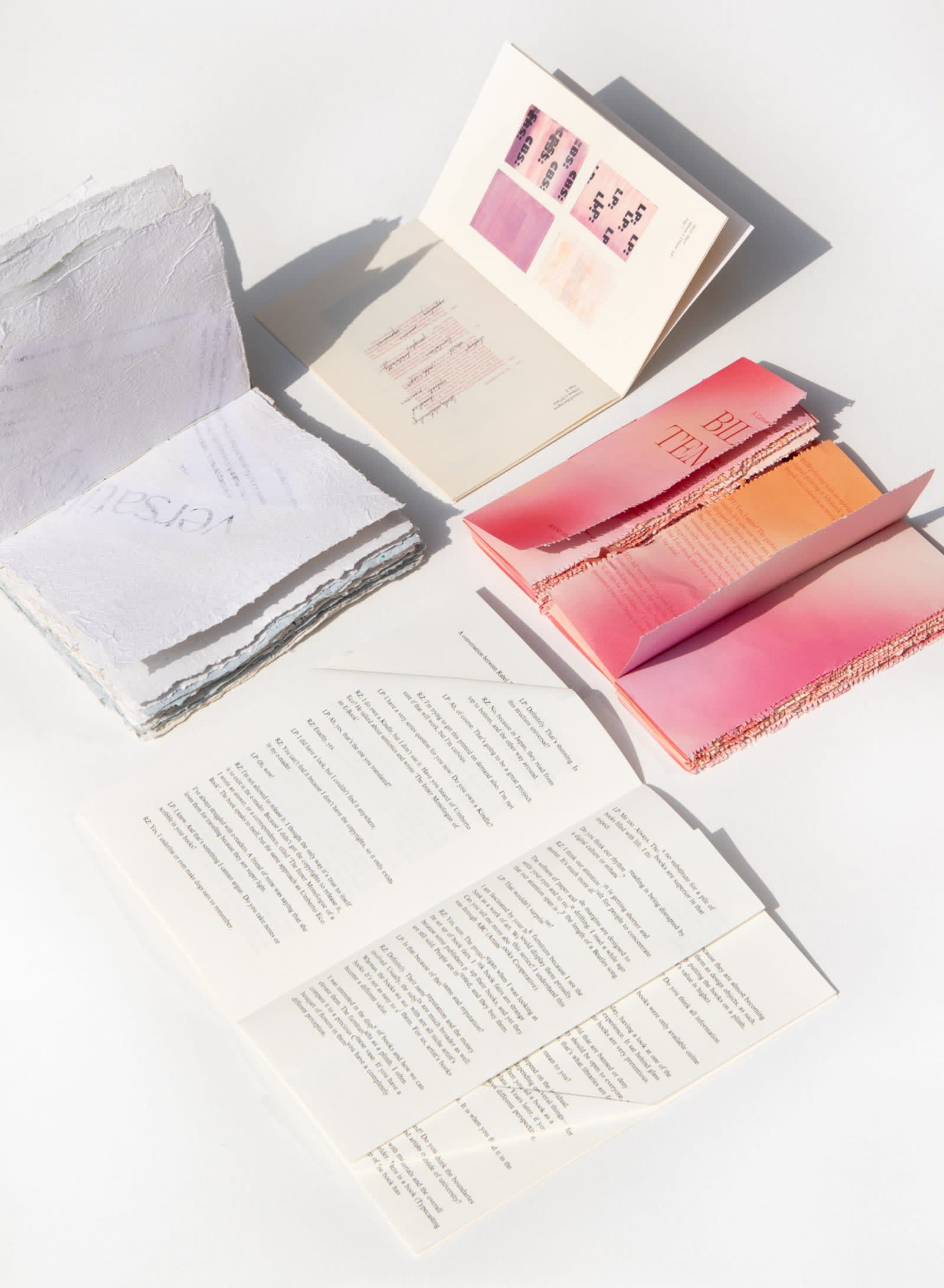
Lili Phillips, BA Graphic Communication Design
-
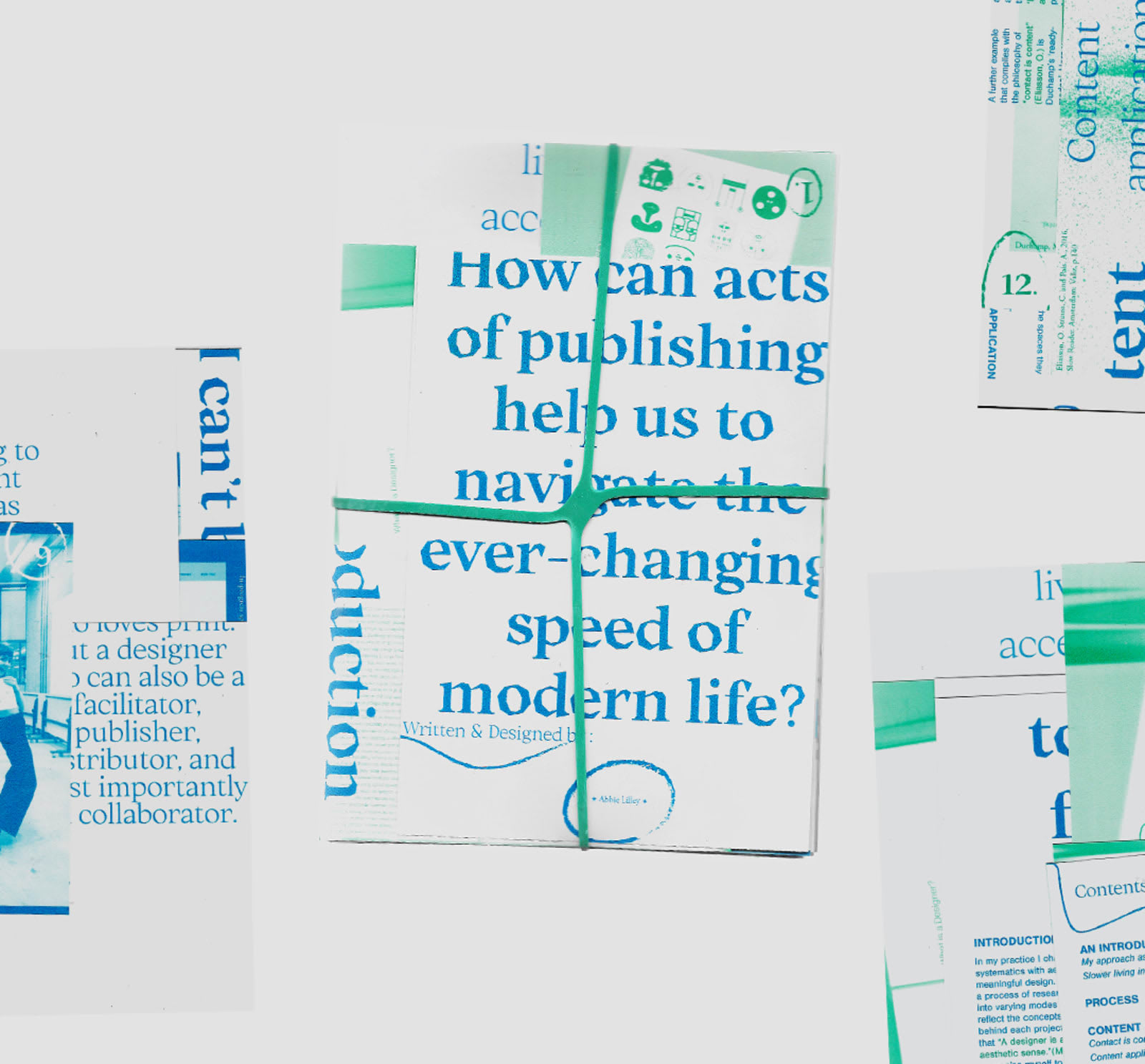
Abbie Lilley, BA Graphic Communication Design
“With the loss of our studio as a base for our community, the Graphic Communication Design (GCD) class of 2020 have been resilient and responsive to the current climate. We have laughed, cried and wobbled our way to each produce a body of work that is reflective of the times and of our individual identities as designers. Utilising these new and unexpected restrictions, we, as a GCD community, have continued to push the parameters of what design is and is seen to be. We design outside the lines.” – Nearly x GCD 2020, Introduction
Nearly provided an online space and publication for final-year BA Graphic Communication Design students to share work-in-progress, thinking and final outcomes. Lilley and Phillips devised the project in order to keep their course community together regardless of location. As Course Leaders Kira Salter and Peter Hall remarked, “Nearly responded to the lost sense of community that followed the shutdown of the Central Saint Martins building; it created a platform for keeping the studio spirit alive.”
More:
-
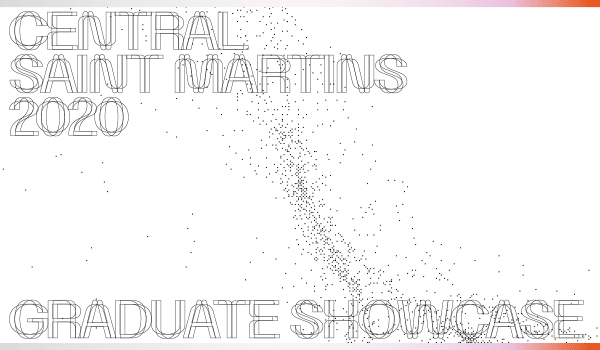
Central Saint Martins Graduate Showcase
-
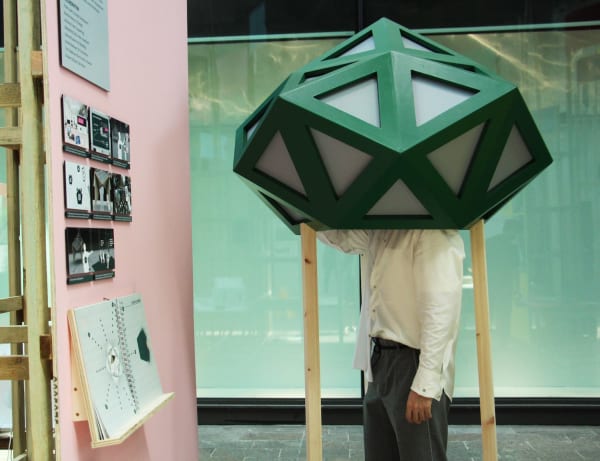
Aga Szypicn | DiverCity
-
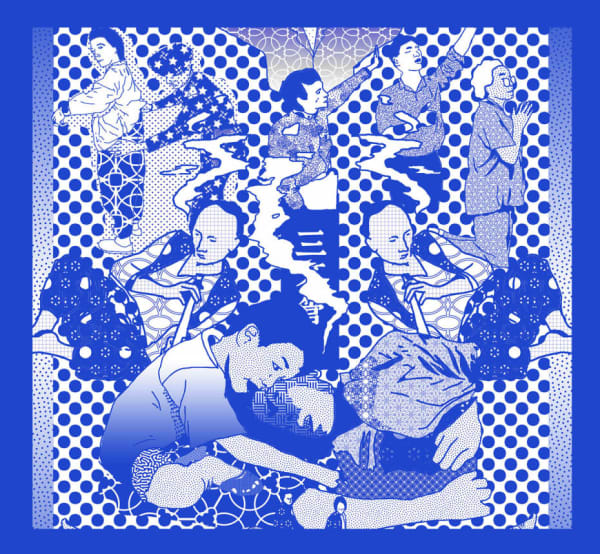
Alison Pong | Hong Kong Walled City
